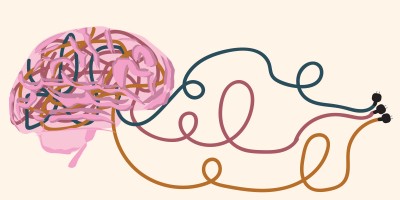
A new study published Wednesday in the weekly journal “Nature” proved the tremendous power of the brain when it indicated it might be possible to reverse the symptoms of autism.
Researchers at the Massachusetts Institute of Technology studied the process of essentially rewiring the brain by “turning on,” or reactivating, a gene later in life. This gene produces the Shank3 protein, which is found between neurons and permits communication in the nervous system. The lack of functional Shank3 proteins causes autism-like symptoms in mice and accounts for about one percent of human autism cases.
The study involved genetically engineering the mice. The researchers turned off the Shank3 gene during embryonic development and later added tamoxifen into the mice’s diet, turning the gene back on.
“Shank3 is a rare cause of autism, but the general principle that the adult brain has a certain degree of plasticity can more generally be applied to many different causes,” said Guoping Feng, an investigator at the McGovern Institute for Brain Research at MIT and the lead author of the study.
The main breakthrough of the research was the revelation of the degree of the brain’s plasticity into adulthood, even after the brain has stopped growing.
“We knew the brain had some degree of plasticity,” Feng said, “but to this degree, that an adult brain with a genetic defect was able to return to a more normal state was quite surprising.”
Although the symptoms of the deactivated gene were significantly reduced when the gene was reactivated closer to birth, reactivating the gene later in adolescence still helped reduce most of the symptoms. While Feng said it is a stretch to look for a complete cure, using this study can help scientists and the general public better understand autism itself.
“This is a study of mice,” he said. “We have a long way to go from applying this information to humans, so I don’t want to give false hope. But just showing that the brain is plastic, in combination with other studies, I do hope that in the future we can develop a much better way to treat autism.”
Helen Tager-Flusberg, director of the Center for Autism Research and a professor in the College of Arts and Sciences at Boston University, stressed the importance of studies such as that done by the MIT researchers.
“Animal models are critical for telling us what function in the brain certain genes play,” she said.
Tager-Flusberg said she is optimistic about the potential of this study.
“Obviously, mice do not socialize in the way that we do,” she said. “But I’d like to think that any breakthrough such as this is a potential step forward in fighting autism.”
Feng agreed that the data gained from the study could be utilized for future autism studies.
“We still have a long way to go in applying this information to humans,” Feng said. “There are several obstacles to overcome, but in the long run, it is very possible to develop this into gene therapy to correct some of the mutated genes.”
In terms of the role the study plays in understanding autism, Feng said this is only the beginning.
“The next step is to understand what causes these general defects,” he said.
Despite the fact that a cure for autism is not likely to be found in the immediate future, many parents of children with autism maintain hope that research will eventually lead to further discoveries.
“I think that these studies give a lot of hope,” said Ashley Palermo, 38, of Austin, Texas. Palermo is the mother of a 4 year old with autism. She said the uniqueness of the varying causes of autism causes greater need for more general findings in the field.
“There’s a saying that if you’ve met one child with autism, then you’ve met one child with autism,” Palermo said.
Although she does not know the cause of her son’s autism, Palermo said she is hopeful that further research will solve some of the mysteries surrounding it.
“There [are] two camps of parents who have kids with autism,” she said. “There’s one camp that says, ‘My child is fine and that I need to embrace the uniqueness of my child and help to integrate them into society.’ I’m of the other camp, which believes in looking for a cure, but I also think that in the meantime, we do need to help others accept our children into society.